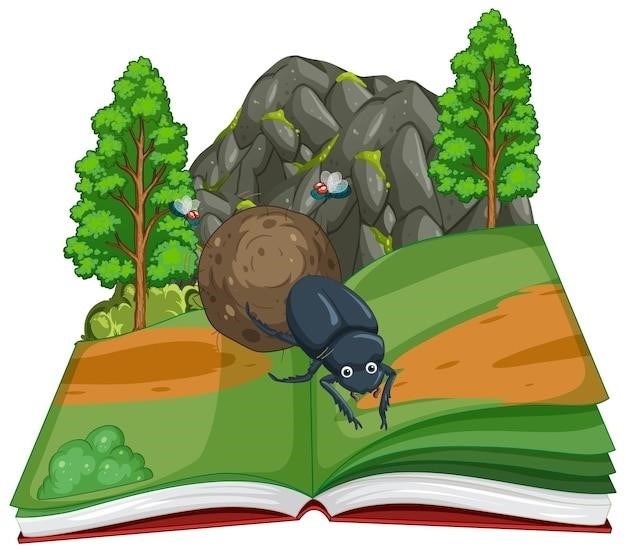This guide provides a comprehensive overview of William Golding’s classic novel, Lord of the Flies. Explore the plot, characters, themes, and important quotes, and delve into the intricate symbolism that enriches the narrative.
This guide also features chapter summaries to guide your reading experience and facilitate deeper understanding.
Engage with the discussion questions to spark critical thinking and further your exploration of the novel’s profound messages. Finally, discover further reading resources to expand your knowledge of this timeless work.
Introduction
William Golding’s Lord of the Flies is a chilling and thought-provoking novel that explores the darker side of human nature. Published in 1954, the story follows a group of British schoolboys stranded on a deserted island after their plane crashes during World War II. Initially, the boys attempt to establish a civilized society, but as time passes, their inherent savagery takes over, leading to a descent into chaos and violence. The novel is a powerful allegory for the struggle between civilization and savagery, and it examines the complexities of power, morality, and the human condition.
Lord of the Flies has been a subject of intense debate and analysis since its publication, sparking discussions about the nature of good and evil, the role of society in shaping human behavior, and the potential for both brutality and heroism within us all;
Plot Summary
The story begins with a group of British schoolboys stranded on a deserted island after their plane crashes during World War II. Initially, they attempt to establish a civilized society, electing Ralph as their leader and prioritizing rescue. Their efforts are symbolized by their construction of shelters and the maintenance of a signal fire. However, their attempts at civility are gradually eroded by the island’s primal allure and the boys’ own inherent savagery.
The charismatic yet manipulative Jack, a boy fascinated by hunting and power, gains influence over the boys, gradually forming a rival tribe that embraces savagery. The novel culminates in a tragic climax as the boys’ descent into barbarism leads to the deaths of Simon and Piggy, representing reason and intelligence. The novel ends with the arrival of a naval officer, who rescues the surviving boys, leaving the reader to contemplate the implications of their descent into savagery.
Character Analysis
Ralph, the elected leader, embodies reason, leadership, and a desire for civilization. Piggy represents intelligence, logic, and the importance of scientific knowledge. Jack, the charismatic and manipulative antagonist, symbolizes the allure of savagery, power, and primal instincts. Simon, a thoughtful and insightful boy, represents spiritual awareness and the potential for inner peace.
The character of Piggy serves as a stark contrast to Jack’s growing influence. He represents the rational side of human nature, advocating for order and logic. However, his physical limitations and reliance on intellect make him vulnerable in the face of Jack’s growing power. The demise of these characters highlights the dangers of unchecked savagery and the fragility of civilization in the face of primal instincts.
Themes and Symbolism
Lord of the Flies explores the complex interplay between civilization and savagery, highlighting the inherent darkness within human nature. The island itself symbolizes a microcosm of society, where the boys are forced to confront their own impulses and navigate the challenges of survival. The conch shell, representing order and democracy, is a powerful symbol of civilization’s fragility.
The Lord of the Flies, a pig’s head impaled on a stake, embodies the evil and destructive forces that the boys unleash. Fire, a symbol of hope and potential, is both a source of salvation and a tool of destruction. The boys’ descent into savagery is underscored by the escalating violence, culminating in the tragic demise of Simon and Piggy, representing the triumph of primal instincts over reason and civilization.
Important Quotes
Lord of the Flies is replete with thought-provoking quotes that encapsulate the novel’s central themes. “We’ve got to have rules and obey them. After all, we’re not savages. We’re English, and the English are best at everything,” states Ralph, emphasizing the importance of civilization and order.
The chilling words of Jack, “I’m going to be chief,” foreshadow the descent into savagery. Piggy’s insightful observation, “There isn’t an adult here. We’ve got to do things for ourselves,” highlights the boys’ forced independence and the consequences of societal absence. Finally, the tragic realization, “The fire is the most important thing,” highlights the boys’ loss of purpose and their descent into primal instincts.
Chapter Summaries
Each chapter of Lord of the Flies unfolds a crucial stage in the boys’ descent into savagery. The first chapter, “The Sound of the Shell,” introduces the stranded boys and their initial attempts at establishing order. “Fire on the Mountain” depicts the construction of a signal fire and the growing tensions between Ralph and Jack. “Huts on the Beach” showcases the boys’ efforts to build a semblance of civilization, while “The Beast from Water” introduces the fear of the unknown and the emergence of superstition.
“The Lord of the Flies” marks the discovery of the pig’s head, symbolizing the boys’ descent into darkness. “Beast from Air” amplifies the fear and paranoia, while “Shadows and Tall Trees” sees the escalating conflict between Ralph and Jack. “Gift for the Darkness” witnesses the boys’ descent into violence and the loss of innocence. “A View to a Death” marks a turning point with Piggy’s death, while “The Cry of the Hunters” emphasizes the savagery of the boys.
Chapter One⁚ The Sound of the Shell
The opening chapter introduces the boys’ arrival on the deserted island after their plane crash. It establishes the initial sense of hope and optimism as they navigate their unfamiliar surroundings. Ralph, a natural leader, emerges as a figure of order and responsibility, calling for a gathering and the use of a conch shell to ensure everyone’s voice is heard. This act symbolizes the initial attempt to establish a democratic and civilized society on the island.
The chapter also introduces Piggy, the intelligent but physically vulnerable boy, who emphasizes the importance of reason and order in their survival. The presence of Jack, the charismatic but impulsive boy, foreshadows the potential for conflict and the allure of primal instincts that will later dominate the island’s society. The chapter ends with the boys exploring their surroundings, setting the stage for the challenges and struggles they will face in the chapters to come.
Chapter Two⁚ Fire on the Mountain
The chapter opens with the boys’ continued exploration of the island, establishing their priorities and routines. The idea of a signal fire is introduced as a means of attracting potential rescue. The boys, fueled by youthful enthusiasm, set about building the fire, but their lack of experience and recklessness lead to a disastrous outcome. The fire, intended as a beacon of hope, becomes a destructive force, consuming the island’s vegetation and endangering the boys’ survival. This event highlights the dangers of unchecked ambition and the potential for chaos even in the pursuit of good intentions.
The chapter also introduces the tension between Ralph’s leadership and Jack’s growing influence. Jack’s desire for hunting and his disregard for the signal fire further emphasize the conflicting forces of civilization and savagery that will shape the boys’ future. The chapter ends with the boys realizing the gravity of their actions and the consequences of their reckless behavior, foreshadowing the challenges they will face in maintaining order and achieving their goal of rescue.

Chapter Three⁚ Huts on the Beach
Chapter Three marks a shift in the boys’ priorities as they move beyond the immediate survival instincts and begin to establish a semblance of civilization. The construction of huts becomes a symbol of their desire for order and a sense of belonging. Ralph, with his focus on rescue, champions the building of shelters, while Jack, increasingly drawn to the primal instincts of hunting, sees it as a tedious distraction. The construction of the huts represents the boys’ attempts to create a society, but it also reveals the growing chasm between Ralph’s leadership and Jack’s emerging dominance.
The chapter explores the development of social dynamics within the group, with the emergence of cliques and hierarchies. Simon, a thoughtful and introspective boy, finds solace in nature, contrasting with the escalating conflicts between the boys. The chapter ends with the unsettling realization that the signal fire has been neglected, emphasizing the fragility of their civilization and foreshadowing the consequences of their growing disunity.
Chapter Four⁚ The Beast from Water
Fear and superstition grip the boys in Chapter Four as they grapple with the elusive “beast” that haunts their imaginations. The fear is amplified by the sighting of a dead parachutist, mistaken for a monstrous creature from the sea. This chapter delves into the psychological impact of fear and isolation on the boys, revealing their growing vulnerability and susceptibility to irrationality. The boys’ anxieties are further fueled by the lack of communication and trust, as rumors and misinformation spread like wildfire.
The chapter marks a turning point in the boys’ descent into savagery. The fear of the beast becomes a tangible manifestation of their inner anxieties and the growing power of their primal instincts. The hunt for the beast becomes a dangerous obsession, overshadowing their initial goals of rescue and order. This chapter underscores the destructive nature of fear and the ease with which civilization can crumble under its grip.
Chapter Five⁚ The Lord of the Flies
Chapter Five marks a pivotal moment in the boys’ descent into savagery, introducing the titular “Lord of the Flies” and its chilling symbolism. The boys, driven by fear and superstition, are increasingly drawn to Jack’s charismatic leadership, which promises quick solutions and primal gratification. This chapter explores the power of fear and how it can lead individuals to abandon their reason and embrace destructive impulses. The boys’ desperate search for a tangible enemy, a “beast,” reflects their inability to confront the true source of their anxieties⁚ their own inner darkness. The chapter culminates in the gruesome ritualistic killing of a pig, foreshadowing the escalating violence that will consume the island.
The “Lord of the Flies,” a pig’s head impaled on a stick, becomes a powerful symbol of the boys’ descent into savagery. It represents the seductive power of primal instincts and the allure of violence. The boys’ obsession with the “beast” becomes a projection of their own inner demons, their fear of the unknown, and their inability to cope with the breakdown of order. This chapter underscores the fragility of civilization and the ease with which it can be replaced by primal instincts.
Chapter Six⁚ Beast from Air
In Chapter Six, the boys’ fear of the “beast” intensifies, fueled by a combination of superstition, imagination, and genuine fear. The boys’ encounter with a dead parachutist, mistaken for the “beast,” serves as a chilling reminder of the power of misinterpretation and the dangers of succumbing to fear. The chapter also highlights the growing divide between Ralph’s group, who seek order and reason, and Jack’s group, who embrace the thrill of the hunt and the allure of primal instincts. This chapter further explores the themes of fear and superstition, demonstrating how they can lead to irrational behavior and ultimately, a loss of control.
The boys’ desperation to find the “beast” mirrors their struggle to confront their own inner demons. The parachutist, a symbol of external threat, becomes a projection of their own anxieties. This chapter emphasizes the importance of communication and clear thinking in navigating difficult situations, highlighting the dangers of letting fear cloud judgment.
Chapter Seven⁚ Shadows and Tall Trees
Chapter Seven marks a turning point in the boys’ descent into savagery. Driven by fear and fueled by Jack’s charisma, the boys embark on a hunt, their actions blurring the lines between play and violence. The chapter unveils the dark potential within human nature, as the boys, once civilized, succumb to primal instincts, engaging in acts of cruelty and aggression. The hunt becomes a symbol of their growing detachment from reason and morality, reflecting the dangerous consequences of unchecked power and the allure of primitive urges.
The tension between Ralph and Jack intensifies, further highlighting the conflict between order and chaos. The boys’ fear of the “beast,” a figment of their collective imagination, serves as a catalyst for their descent into savagery, symbolizing the power of fear to distort reality and lead to irrational behavior. This chapter underscores the fragility of civilization and the ease with which it can crumble under the weight of fear and the allure of primitive urges.
Chapter Eight⁚ Gift for the Darkness
Chapter Eight marks a pivotal point in the boys’ descent into savagery, as they embrace their primal instincts and abandon any remaining vestiges of civilization. The chapter opens with the boys’ escalating violence against the island, symbolizing their growing disconnect from nature and the consequences of their actions. The hunt for pigs becomes a ritualistic act, a means of asserting power and dominance over the natural world.
The boys’ belief in the “beast” intensifies, further fueling their fear and irrationality. The chapter’s climax sees the boys engage in a gruesome act of ritualistic violence, culminating in the symbolic offering of a pig’s head to the “beast” ― a stark testament to their descent into barbarity and their loss of moral compass. This chapter highlights the dangers of unchecked power, the seductive allure of primitive urges, and the tragic consequences of succumbing to fear and superstition.
Chapter Nine⁚ A View to a Death
Chapter Nine marks a tragic turning point in the narrative, as the boys’ descent into savagery reaches its peak. This chapter is characterized by a sense of impending doom, fueled by the boys’ escalating fear and paranoia. The death of Simon, a gentle and insightful boy, is a pivotal moment, highlighting the consequences of the boys’ blind faith in superstition and their inability to discern truth from fiction.
Simon’s death is a powerful symbol of the loss of innocence and the triumph of savagery. The boys, fueled by their fear of the “beast,” mistakenly identify Simon as the beast and brutally kill him, reflecting their inability to reason and their susceptibility to mob mentality. This chapter is a stark reminder of the dangers of prejudice, the fragility of human reason, and the destructive power of unchecked fear and violence.




About the author